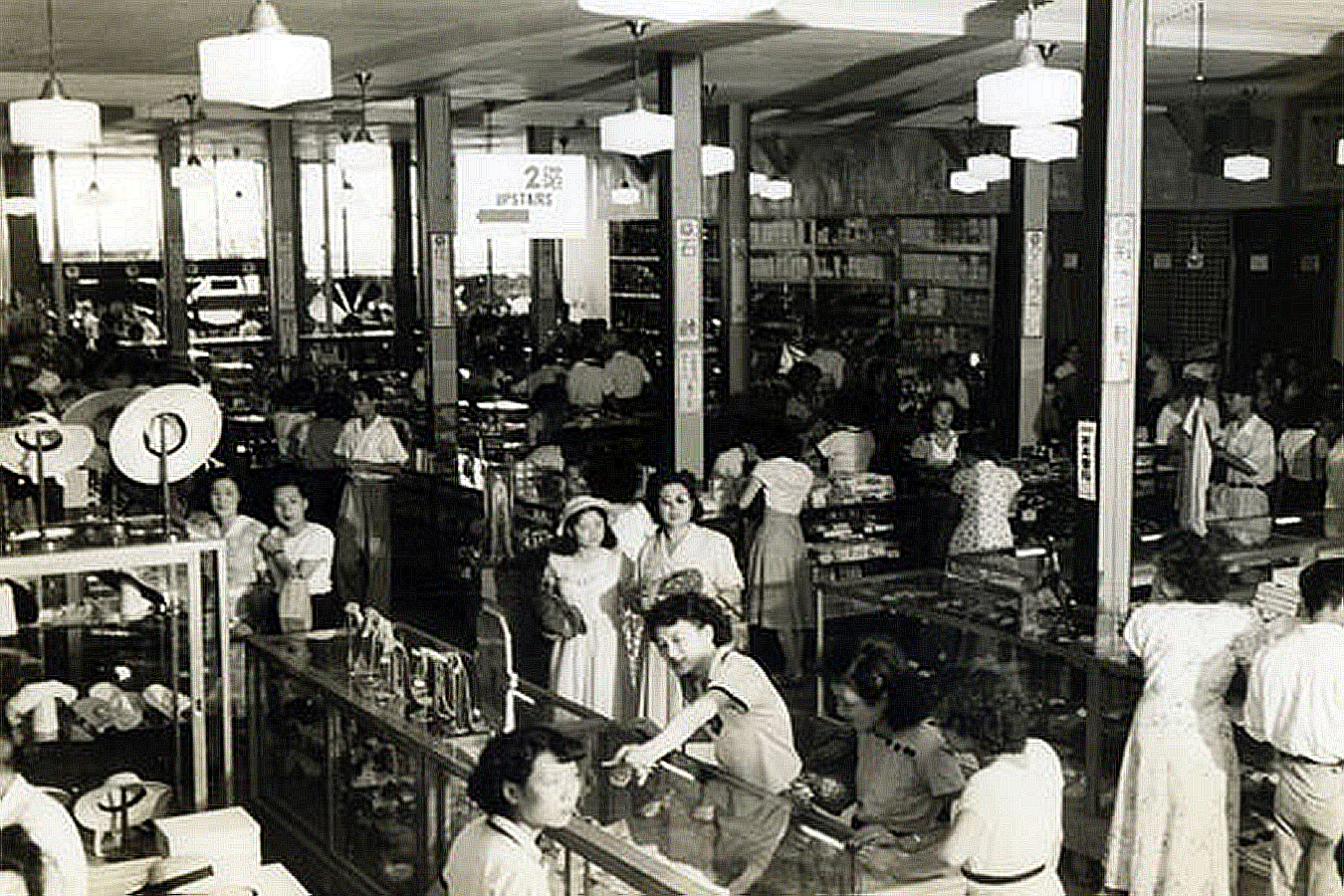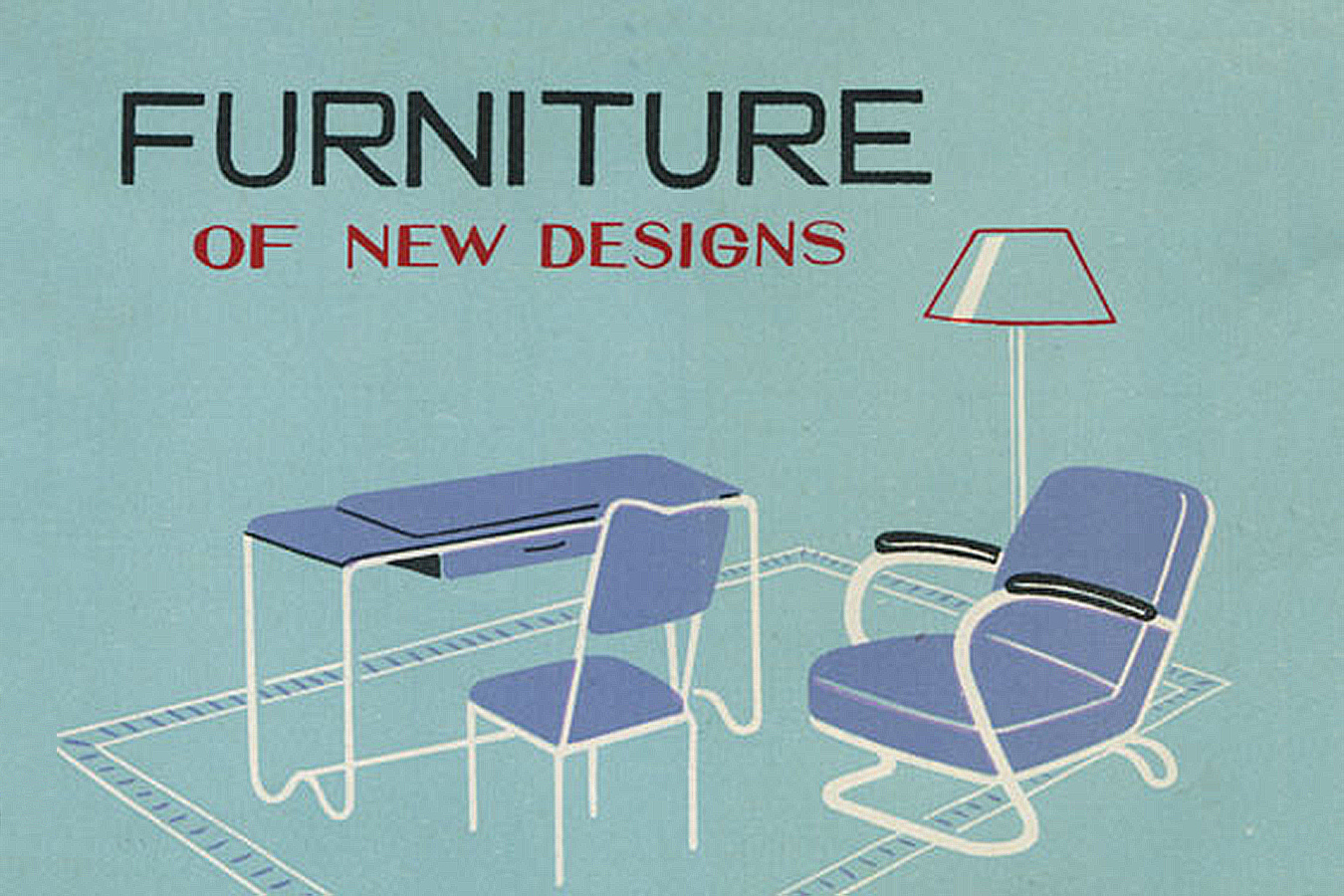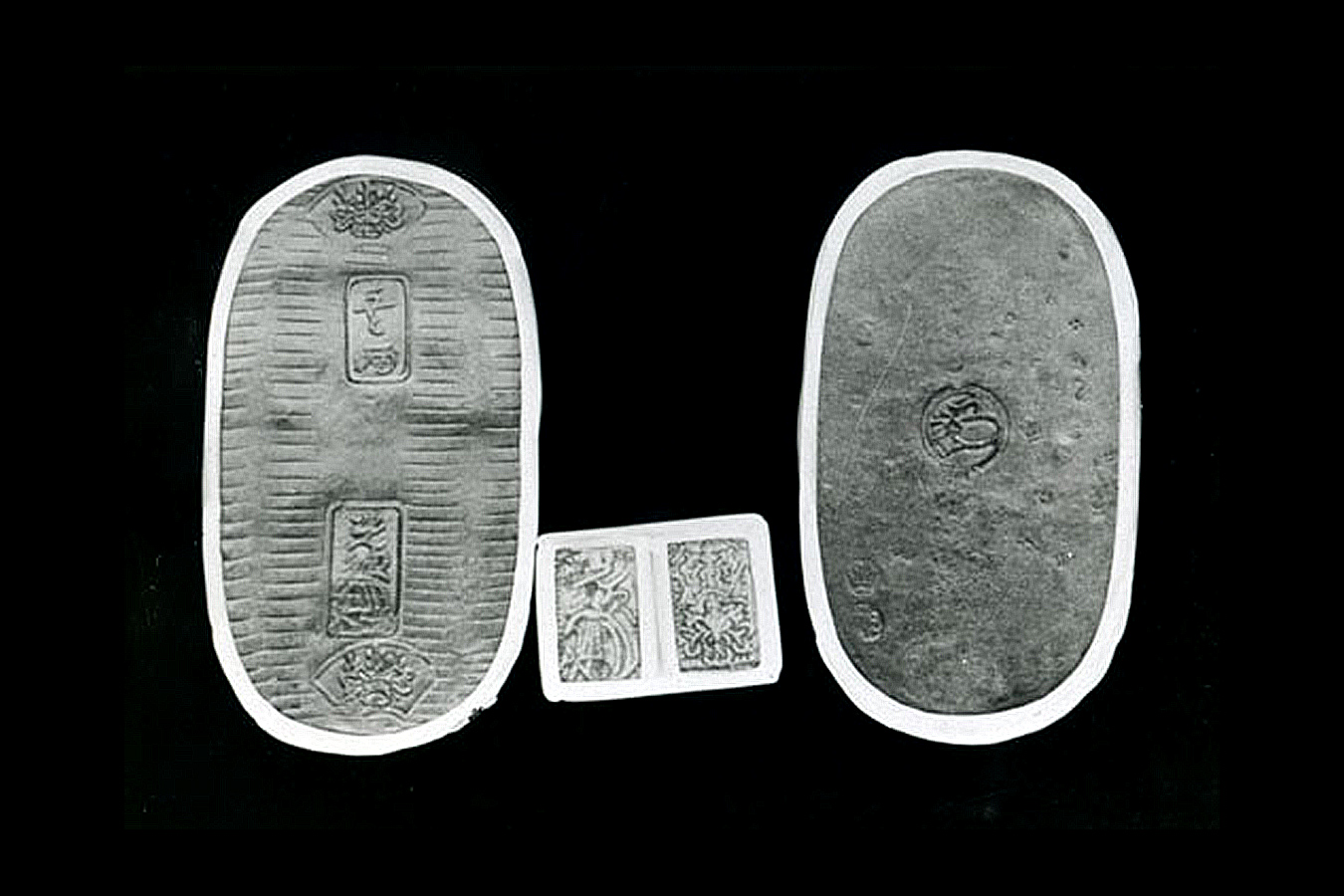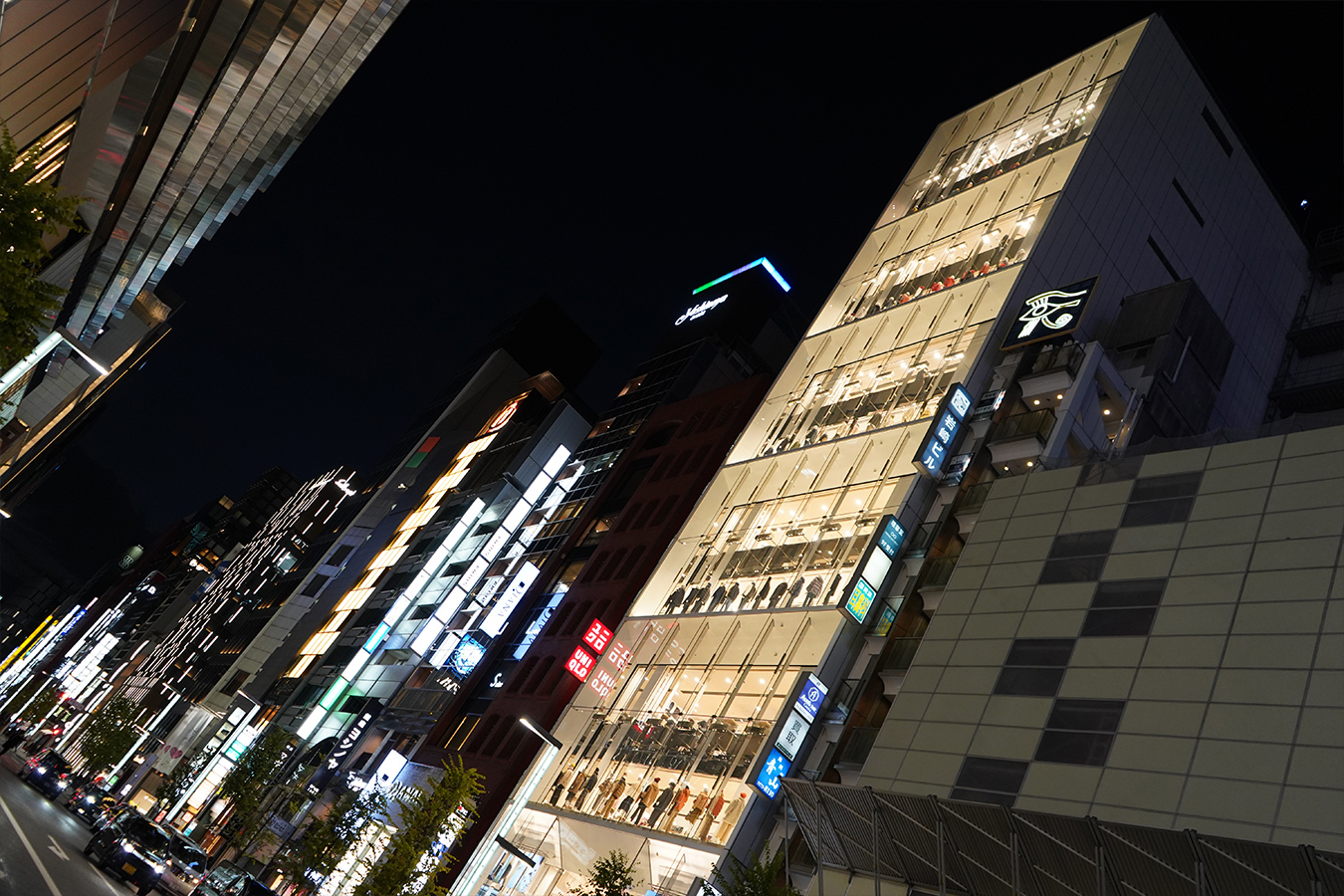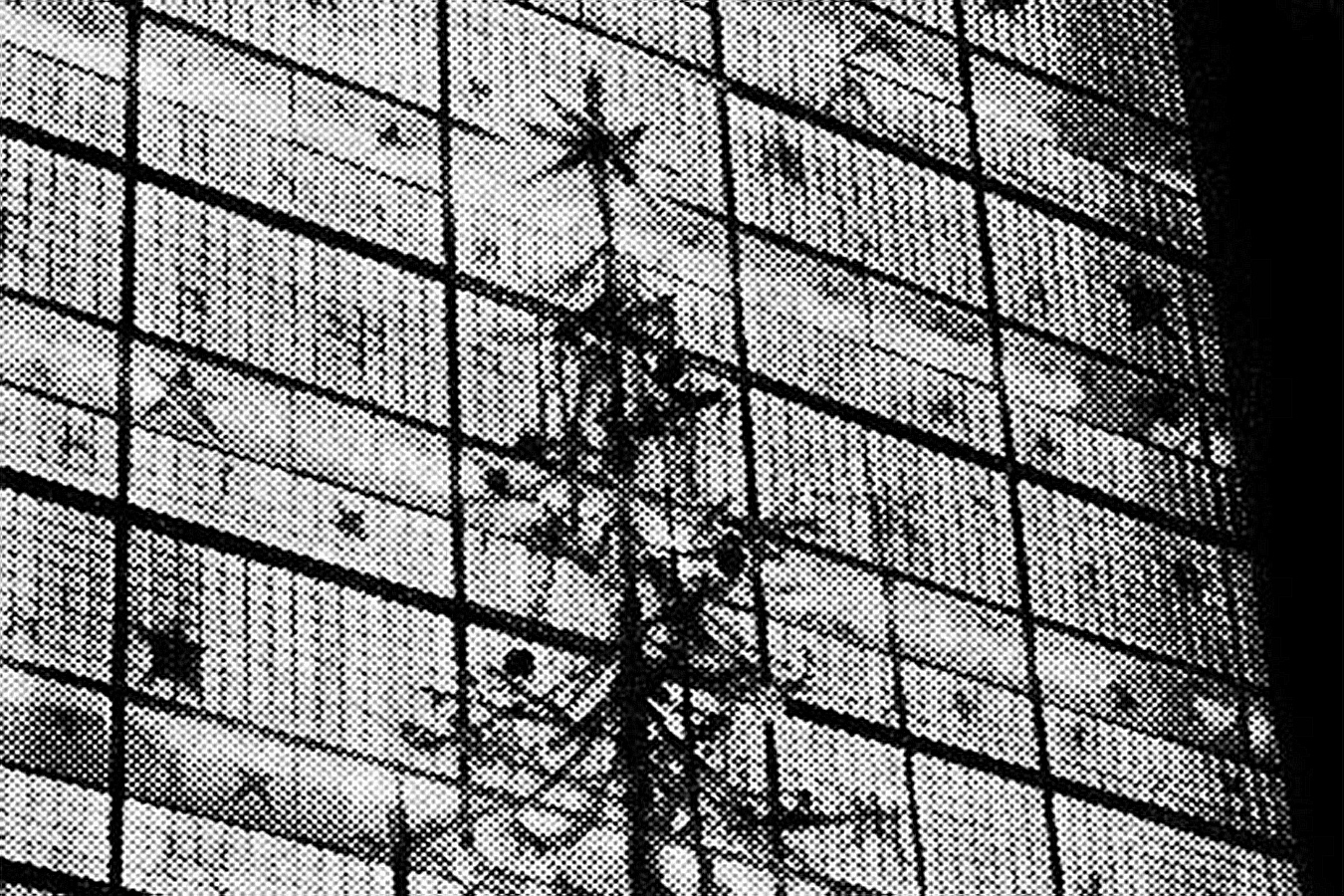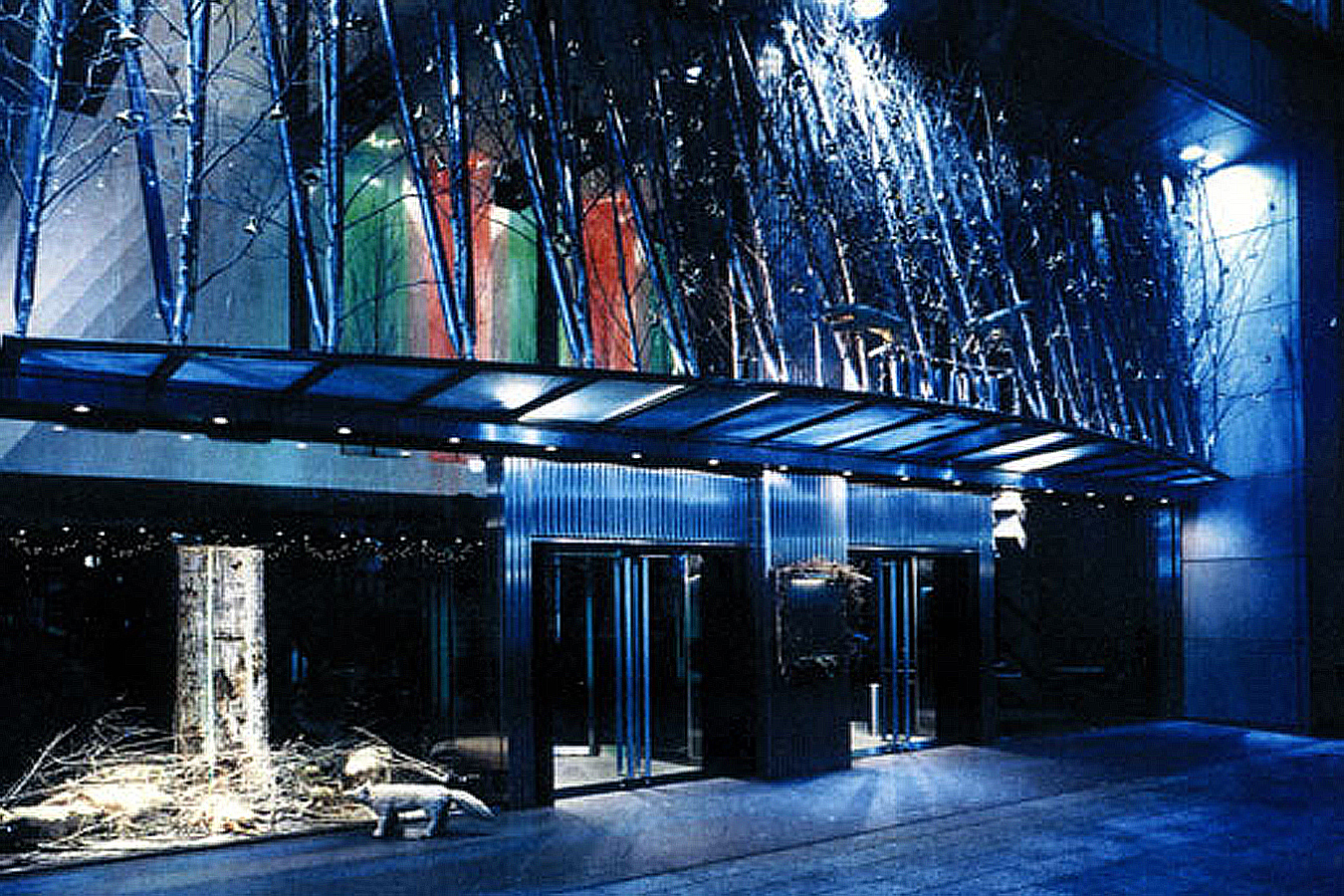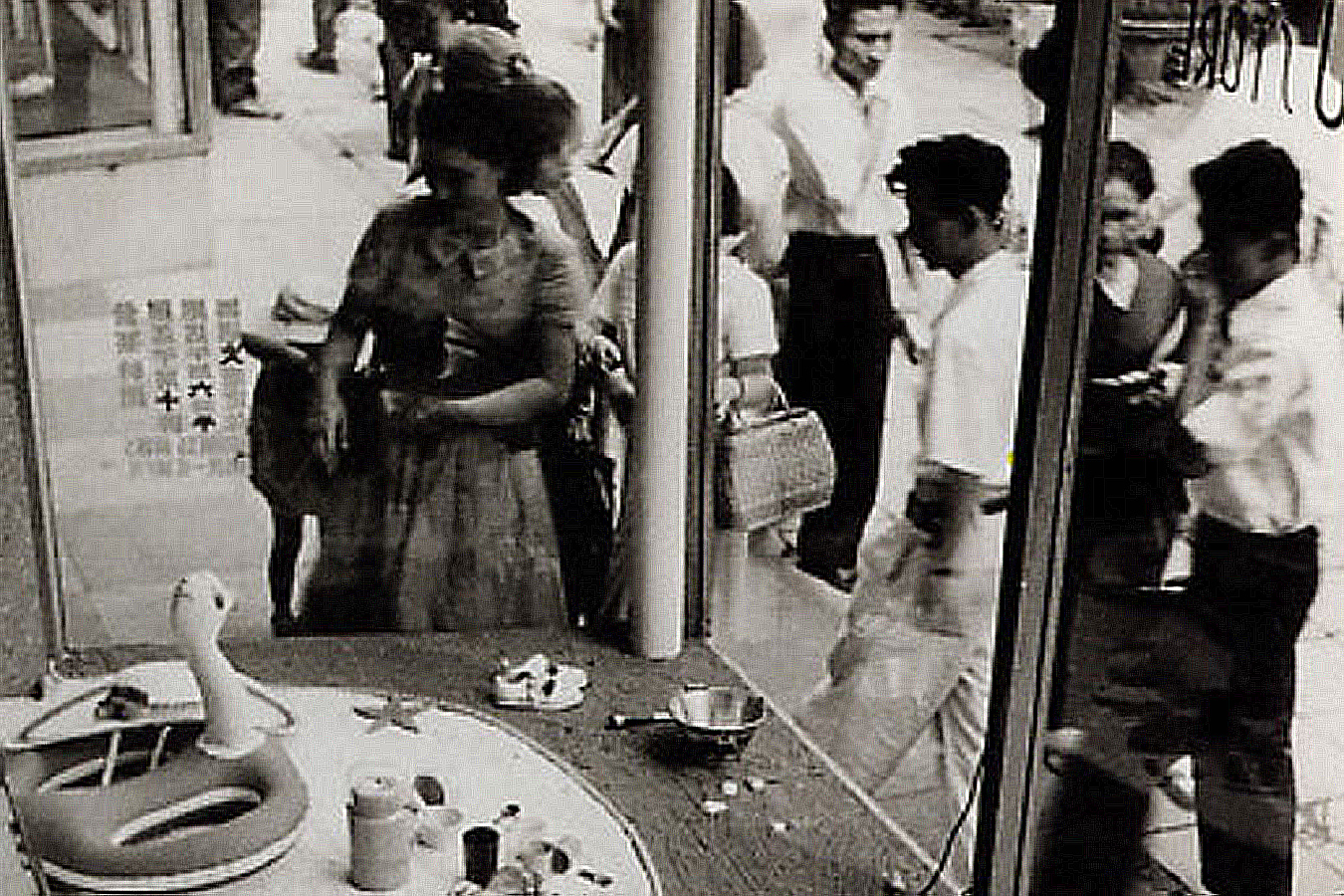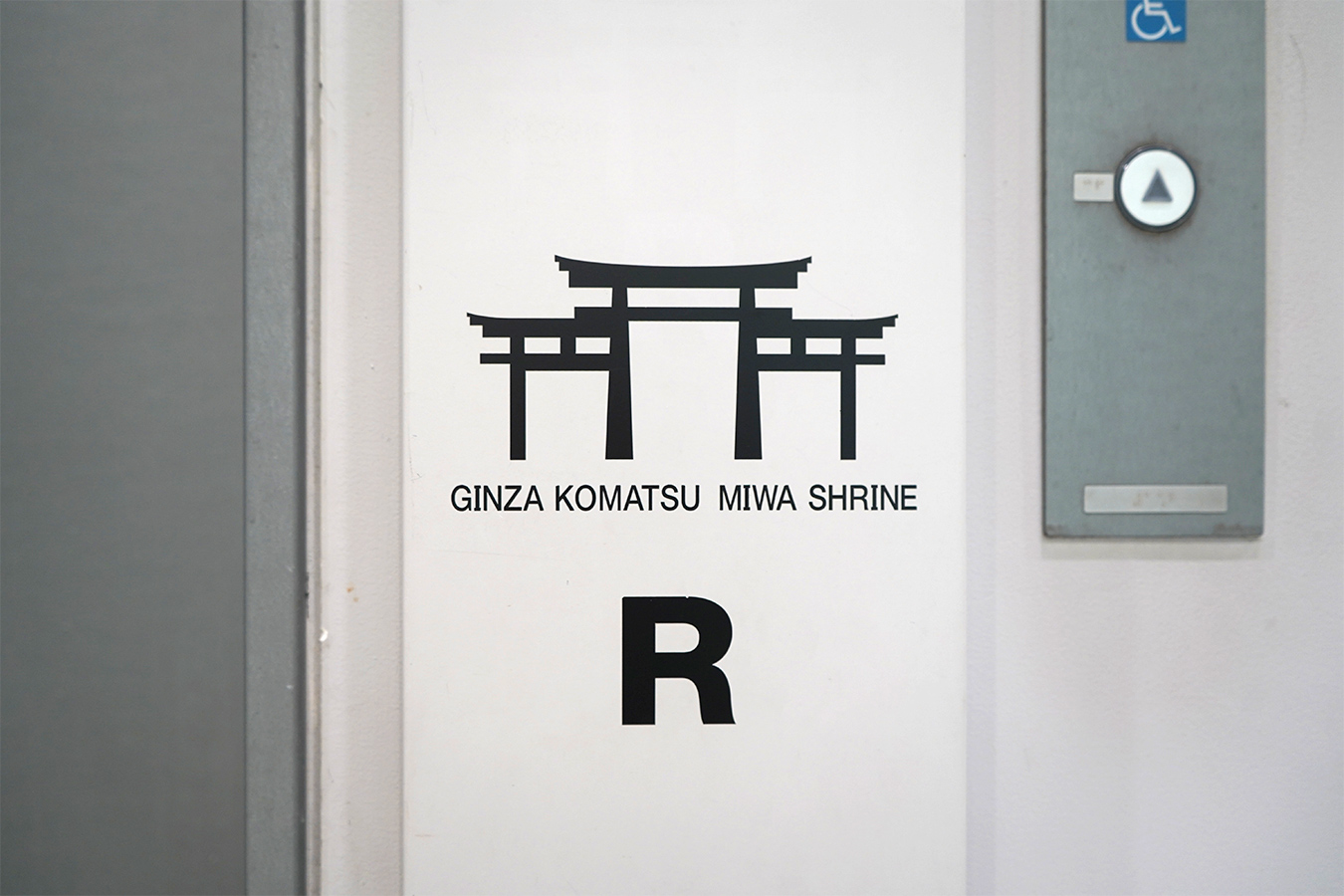-
Komatsu Store’s important creed: “Providing customers with dreams and new cultural lifestyles”
Today, Komatsu Store is run facing the fashionable and elegant Ginza district, but when it was founded it was getting its start in a Ginza that would be unrecognizable to most people today. Komatsu Store was established shortly after World War II, at a time that was still full of uncertainty and plagued by shortages. Of course, Ginza was no exception. And so it was that Komatsu Store got its start in a more austere Ginza during a darker time. Watching one restaurant after another open, the Kosaka family, which had been restaurant proprietors before the war, decided to try their luck at getting into a new line of business. Thinking that success could not be found in the restaurant business, surrounded as they were by clubs and restaurants, they decided to change business models. The new business model was Komatsu Store, the brainchild of the company founder, Takeo Kosaka, who conceived of a small-scale department store where “we’ll sell anything and everything that’s available.” The small department store became a reality. Komatsu Store was born. The concept was to be as grand as possible. Believing that dreams for the future should be depicted as grandly as possible, even if initially only on a small scale, the founder, Takeo Kosaka, opened Komatsu Store as a store that sold dreams. The time was April, 20, 1946. In his book, A New Kind of Merchant, Takeo Kosaka writes, “It may seem presumptuous, but we believe we are providing customers with dreams and new cultural lifestyles.” True to his words, Komatsu Store embarked on the challenge of running a small department store that provided its customers with dreams and culture. Some examples of typical ways this was achieved include new lifestyle ideas in the form of Christmas season products, a novelty at the...
-
Our small department store’s four virtues and fine-tuned service
In addition to the hospitality we show our customers, everyone at Ginza Komatsu makes a point to adhere to what we call “the four virtues” or “the four virtues for prosperity”—kindness, quickness, cleanliness, and thoughtfulness. Written down more than fifty years ago and passed down to us by company founder Takeo Kosaka, the same spirit is alive and well within us today. In his book A New Kind of Merchant, Takeo Kosaka writes, “The root of prosperity is in four virtues: kindness, quickness, cleanliness, and thoughtfulness.” Ginza Komatsu is different from what is usually referred to by the term “department store.” We have less floor space and are more limited to what we can put on display compared to a large-scale retailer. However, we listen carefully to each customer and respond immediately to his or her needs. We go out of our way to provide a service that is tailor-made to each customer—the kind of hospitality that is possible exactly because we are smaller. That’s what our founder, Takeo Kosaka, called “fine-tuned service.” It is our belief that shopping involves more than just the act of finding and buying products. We aim to provide customers who come to Ginza with an experience that is meaningful to them. We strive to understand how we can better help customers as they go through the process of discovering products they like. This sentiment is embodied by our four virtues for prosperity. Most people have a standard image of department stores—selling spaces that stock large numbers of products and carry a large variety of brands. We have striven to become a store that breaks free from such preconceptions. If we only thought of matters in terms of business, we could end up with strategies and sales promotions that would probably increase the number of...
-
Koban found!! at the construction of the old building
With the re-enactment of the Department Store Law in 1956, Komatsu Store was categorized as a mid-sized retailer, so to make a new start befitting its status, a decision was made to revamp the main store building, which had been in operation for ten years. A year of major construction work ensued as a result. During this large-scale construction on the main store, an unexpected event caused a major stir, namely the news that koban (feudal-era gold coins) had been unearthed from the site. The happy news that koban had been unearthed from a Ginza construction site became headline news that swept the country. One could hardly ask for a better omen than to find gold while rebuilding. What a bonanza! To have koban—gold coins—coming out of the ground you’re building on. That’s a great sign for the future success of the business. The amount of gold found was considerable. In all, 208 Keicho koban and Kyoho koban coins were excavated. And, in addition to the oval koban, 60 smaller coins of a unit of money known as ichibu-kin were discovered. The person who found the coins while working at the site must have been completely astonished. Komatsu Store quickly relinquished its right to ownership of the discovered treasure and, declaring it to be buried cultural property belonging to the nation, not private property, donated it to the Tokyo National Museum in Ueno Park, where it remains to this day. The decision to interpret these gold artifacts as part of the country’s cultural heritage rather than the company’s private fortune is true to the character of Komatsu Store, which is a company that values culture. This incident of the unearthing of the koban, which occurred while the store was closed and the building under construction, was another case of Komatsu...
-
An avant-garde source of fashionable goods “Ginza’s fashion center
Komatsu Store gained the reputation of being the first place to go to find something new. In 1978, the store underwent major remodeling in what was the beginning of the third stage of the store. With a name change to “Ginza Komatsu,” the store started promoting itself as the Ginza fashion center. It became a source of fashionable goods popular in Japan, and was several ranks ahead of its competitors when it came to doing novel things. However, that’s not to say we were desperate to do things that were novel. Novelty doesn’t emerge just because of a decision to do something new. New ideas do not originate from someone intending to do something novel and then embarking on a course of action. On the contrary, it’s all up to the customer. Specifically, it is the customer visiting the store who feels that something is novel. Novelty is attributed to something only after the customer feels it is novel. We believe it is the unique responsibility of a small department store like Komatsu Store to produce the desired experience for each customer. That’s why we think of the store as a small department store—it doesn’t feel as big as a typical department store and is just the right size to be able to take everything in at a glance. When you want to convey something to a customer—have him or her sense its real value—there is no substitute to having the customer experience it for himself. We believe it is the job of Komatsu Store to create that process. Our customers know it when they find something that is good. And each person is different. We want everyone to be able to prioritize their own individuality. We want each of our customers to find the things that suit their preferences,...
-
The style of Komatsu Store Christmas
In the winter of 1946, Komatsu Store began a new tradition for Ginza—the Christmas Sale. At the time, Christmas wasn’t as celebrated as commonly in Japan as it is today. At the busy time at the end of the year, many stores displayed signs like “Year-end Clearance Sale,” but Komatsu Store was the only one advertising a “Christmas Sale.” The word “Christmas” itself was a novelty back then, and the special services only available at that time of year became a big hit. Of particular interest to people was the special Christmas wrapping paper. Japan was suffering from a shortage of supplies. Even newspaper was hard to come by. So the wrapping paper fulfilled an emotional need on the part of our customers by responding to their sentimental desire to give a special gift on a special day, even if it was only a modest gift. During a time when people couldn’t afford to spend much money on presents, our customers could be seen walking home carrying colorfully wrapped packages under their arms. Such a sight wouldn’t turn anyone’s head today, but back then it was groundbreaking. At a time when paper was a precious commodity, our Christmas wrapping was a big hit. Originating from an idea of company founder, Takeo Kosaka, this wrapping paper became a winter tradition at Komatsu Store. In 1949, we also began the tradition of putting a big Christmas tree in front of the store. Pictures from that time show a magnificent natural tree, taller than the building, with vivid decorations that gave the storefront a merry appearance. Many of our customers have fond recollections of a time when one of the joys of winter was to gaze up at the tree before entering the store to shop for presents. Afterwards, whenever we rebuilt, we...
-
Why an art space in a small department store? Between art and entertainment
Since the remodeling done in 1987, Komatsu Store has had an art space on the first floor facing Ginza-dori. You might wonder why a small department store would have an art space or gallery, particularly in a conspicuous place like the entrance on the first floor, which is the part of the store that customers see first. It was an idea befitting Komatsu Store, which has a high regard for culture. It was also an endeavor that fit the Komatsu approach of attempting what others do not. We believe being yourself means incorporating good things that you have found and experienced on your own. Being yourself is discovering things yourself based on the things you yourself have experienced. We want our customers to find that sense of their own identity. We have striven to help you attain a lifestyle that makes that possible. In order to be able to suggest that kind of lifestyle to our customers, we ourselves must also ascribe to the same type of lifestyle. Komatsu Store’s style of doing things is to expose ourselves to culture and cultural experiences on an ongoing basis and introduce our customers to ‘fresh’ things that leave a lasting impression by displaying them in our store and show window. That applies to the atmosphere encompassing the entire space within the store, not just the products on sale. We bring culture to customers on an intuitive level, even if it only involves things that cannot be sold. In order to enable each customer to discover his or her own identity, we consciously operate the store so that the time spent in it will be life-enriching for the customer. Based on this policy, we situated the art space in the most conspicuous location within the store. The first thing that catches the customer’s...
-
“show-window” is the best connector between customers and what we really want to sell
If asked what a department store’s show window represents, many shopkeepers would reply immediately with an answer such as “It’s a ready tool for sales promotion costing the least amount of money.” That is certainly not incorrect. However, as far as Komatsu Store is concerned, the show window is much more than that. It’s the only window that connects us to our customers. It’s the first ‘door’ through which we can have a relationship with our customers. That’s what a show window is to Komatsu Store. In his book A New Kind of Merchant, company founder Takeo Kosaka writes that the aim of a show window is to familiarize passersby with the store. In terms of sales strategies, it may be very effective to fill the show window with products on display. But unless you can see through the window to the inside, you can’t become familiar with the store just from looking at things in the storefront window. That wouldn’t be in line with the essence of Komatsu Store. So what is the essence of Komatsu Store? It is to cherish the relationship with each customer. Remember that it is people who buy, sell, and deal in goods. Those activities involve human relationships. Some merchants may think of them as just transactions, but we cherish the added value that is produced by valuing these relationships. This is not limited to our relationship with customers. The same thing can be said about our relationship with each of the tenants in the building. Taking care each time you communicate with someone produces a precious asset. We believe these have turned into valuable assets. We believe we have been able to provide customers with that essence which is unique to Komatsu Store exactly because we have cherished individual relationships in each and...
-
Ginza’s shrine located right under the sky. You cannot imagine how quiet it is
The rooftop of Komatsu Store comes with a Shinto shrine, situated right under a broad expanse of sky, belying the fact that it’s in the middle of a metropolis—the perfect spot for a shrine called Tenku Jinja (“Shrine in the Sky”). It is dedicated to the Shinto god of Omiwa Shrine, otherwise known as Miwa Myojin Shrine or Mount Miwa, located in Nara Prefecture. Omiwa Shrine is Japan’s oldest shrine, and continues to communicate the ancient form of the Shinto religion to people today. The whole of the mountain known as Mount Miwa is considered to be the shrine. The rooftop shrine was installed in 1992 as a result of events leading from a specific incident. Company president Kei Kosaka became interested when he saw an artist who was holding an exhibition at our Amuser event space sprinkle sacred sand from Omiwa Shrine as part of a prayer that the exhibition would go well. The president felt fate had had a hand in him witnessing this event because a tragic incident had recently occurred in which an employee passed away while working, and Mr. Kosaka himself hadn’t been feeling well either. When the artist introduced Mr. Kosaka to Omiwa Shrine, the president promptly visited the shrine and climbed Mount Miwa, something he was to repeat several times later. After worshipping thus many times, he installed a household Shinto altar in the president’s office, and eventually had the Shinto shrine installed on the roof. Every year, before the morning assembly on the first business day of the New Year, we have the chief priest of a Shinto shrine come and perform a purification ceremony. In the lead-up to the building’s renewal, we plan to give the shrine on the roof a new look. After its makeover, we plan to make it...
